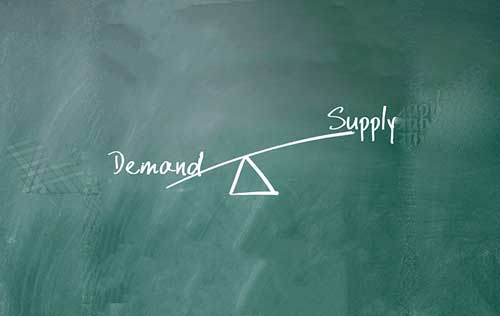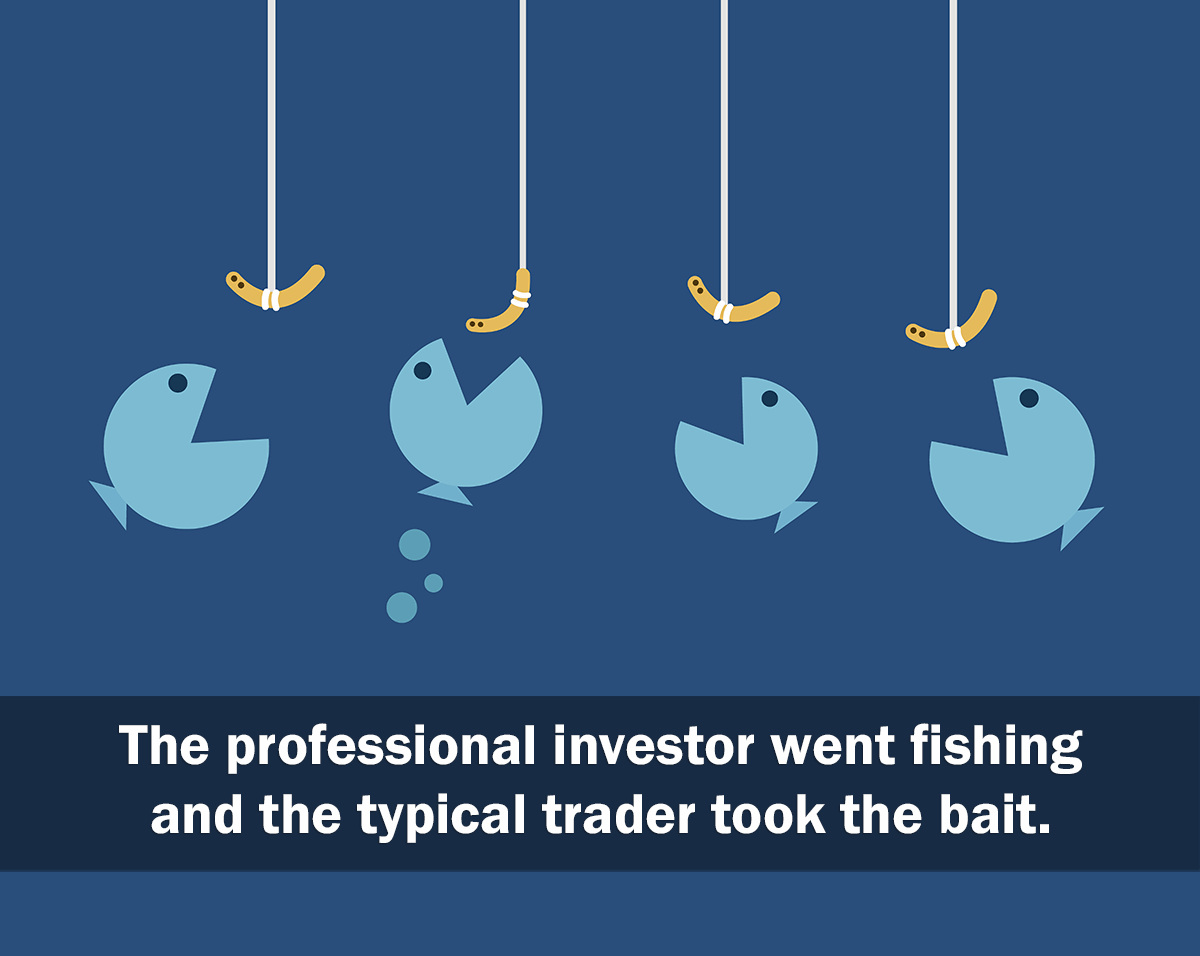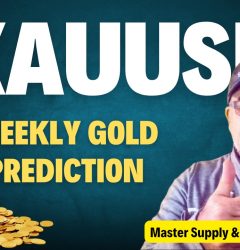11 May

Supply and demand is among many other stocks and Forex trading strategies, it’s not better or worse than other strategies, but this trading strategy explains in a lot of detail how most of the strong movements are created while following a logical rationale. Once you start trading our supply and demand strategy, your reality will be re-framed, how the market works and is moved by professional investors.
Once you understand and accept that supply and demand are the forces that control and move the markets, you’ll be able to trade in line with the big banks and institutions and ride long-term trades where they place their trades.
Supply and Demand Forex and Stocks Strategy
Our supply and demand trading strategy is suitable for any market, Forex and Stocks included. Is supply and demand the same as support and resistance? No, it is not. It could be said that support and resistance is simply the result of supply or demand.
There is support at a particular price level simply because of the demand for the asset at that price level. On the other hand, there is resistance at a particular price level due to the available supply at that price level.
You can use other Forex and Stock trading strategies. Still, supply and demand is ubiquitous and move the market in a way that you will be amazed at once you learn the basics about supply and demand and how it affects the Forex currency pair market and the stocks market.
Online trading academy Supply and Demand
At Set and Forget trading community, we’ve been helping many traders worldwide understand how the markets move and how the newly created supply and demand imbalances can create many trading opportunities. Find below an example of these imbalances on Microsoft Corp analysis and forecast shared in our blog a few weeks ago.

At Set and Forget, you cannot attend a physical classroom. All the learning and education is done in our online trading academy. There are a lot of advantages because every analysis, every potential imbalance and confirmed imbalance is recorded in the trading community for further consulting in the future. You will have access to years of stock and Forex analysis following the rules laid out in the Forex and Stock trading course.
An archive of years of analysis of supply and demand will greatly improve your learning curve. Our online trading academy at Set and Forget will help you have a chance at becoming a trader.
Price Action and Supply and Demand trading strategy
Price action and supply and demand go hand in hand. There is not one without the other. Mastering price action with our supply and demand trading strategy will teach you to read institutional order flow using supply and demand on larger time frames and trade with the big fishes.
You will learn how to determine whether supply and demand areas are strong or weak, when to trade them or when not to trade them. Price action, together with the logic in our supply and demand Stock and Forex trading strategy, will improve your understanding of the markets and give you an edge to trade the markets.
What is Supply and Demand?
The only reason why price moves in any, and all markets, is because of the imbalance in supply and demand. The greater the imbalance, the greater the move in price.
Why do Supply and Demand imbalances occur?
The Currency and the Stock markets, and the financial world, in general, are dominated and ruled by big investors, institutions, central banks and professional traders.
They have the ability and capacity to move and change the markets with thousands of orders – These orders create the so-called supply and demand imbalances. One single investor can change.

Supply and demand is one of the four major factors that cause both long-term trends and short-term fluctuations.
The other three factors are governments, international transactions, speculation and expectation. Government mandates, like interest rates or spending or tax policy, impact international transactions, which play a role in speculation. Supply and demand play a role in each of these other factors.
Changes in supply and demand create trends as these market participants fight for the best price. Daily news affects the world’s economies, International transactions, and balance of payments between countries.
- Positive news usually increases demand and reduces supply, leading to higher prices.
- Negative news usually decreases demand and results in an increased supply.
The retailer and small investor become the bait, the liquidity the professional traders need to fill many orders. They can’t sell if there are no buyers interested.
Every trader/institution perceives fair price and future value differently. Supply is simply the amount available, while demand is the wanted amount. Supply is the amount available at a particular price, while demand is the amount that is wanted or desired at a specific price.
A seller’s willingness to sell products increases as prices increase. The opposite of this shows that as prices increase, we see demand reduces. Buyers will demand more when prices are lower.
Check out some price charts and trade setups on the latest trading ideas updated every day. Learning a supply and demand strategy will help you locate turning points in any market methodically and consistently.
Supply and Demand basic concept
We are really good supply and demand citizens in real-life scenarios. We’re potentially great supply and demand traders able to learn a supply and demand trading strategy. Still, when it comes to trading, most traders will do exactly the opposite and trade against supply and demand, something they would never do when they want to buy a car, a cloth, a pair of shoes or a house.
Why are we consistently going against the supply and demand logic we apply so well in our lives?

Let’s imagine your partner kindly asks you to go and buy some meat for dinner. You go to your favourite market and see the price of the steak you normally buy has almost doubled! Enjoying your barbecue will cost twice as much; you quickly begin to think about how valuable that steak might be.
You begin to look at alternatives, such as hamburgers or maybe a chicken breast, replacement products with which you can get a similar result at a far lower cost.
While you may decide to pay the increased price of that steak, you have to think of the market dynamics at work. Not every steak buyer would be interested in doing this; many would opt for replacement products because they could not afford the new higher price. This is a living example of supply and demand. As the steak price increases, demand for steak decreases.

The next week you go to the same supermarket and see that steak is half of what you normally pay; it’s 80% off last week’s price. Will you now think differently from the previous week? You will think that you can buy more while the price is low. Other customers are buying while the price is low, and you realise that if you don’t act fast, all of the discounted meat will be gone before you make up your mind! You could buy a few steaks and conserve them in the freezer.
This is demand at work again. As the steak price lowered, demand increased for you and the market in general. This example is very similar to what we see in the Currency and Stock markets or any market.
The financial markets move trillions every day, and the reason for this is the heavy demand for traded assets. Currencies are the basis for the world’s economy. A Forex exchange will be required whenever one economy wants to trade with another (provided different currencies are used).

Unlike markets that are traded through an exchange, each Forex broker creates a market. More or less, the charts will look the same, but individual bars can be different, and price patterns, in particular, can vary a little from broker to broker.
Ultimately, the various markets created by the brokers will, to some extent, be arbitraged (the simultaneous buying and selling of securities, currency, or commodities in different markets or derivative forms to take advantage of differing prices for the same asset.) so they stay close to each other. Ultimately, you must trade what you see on your charts and ignore everything else.
What we perceive as the personality of a currency pair is just manipulation. Some instruments have lower liquidity (some Forex cross pairs, exotic pairs and Stocks), zones are overshot, and then the price goes in the opposite direction.
That is not the picture of “this instrument does not respect supply and demand”. That is the picture of “this instrument is being manipulated, bear traps, and bull traps”.
The financial markets are traded by professionals and not by retailers; each has its trading strategy, most of the time not a supply and demand trading strategy but some of these big players create these imbalances. A hunter has all sorts of traps to capture its prey, as do the big institutions. We are trying to combat professional hunters; as retailers, we are their prey.
Join our supply and demand stock trading course to learn how to trade using our supply and demand trading strategy.








